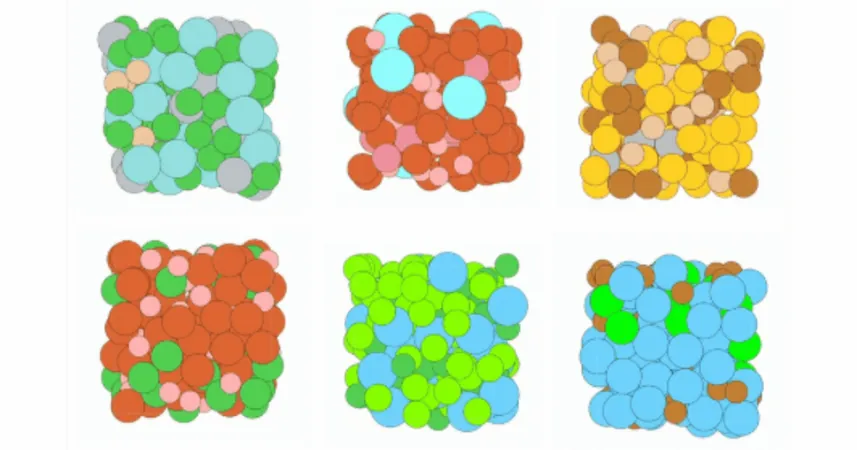
Revolutionizing Molecular Simulations: Meet TorchSim, the PyTorch-Powered Engine!
2025-04-11
Author: Benjamin
Introducing TorchSim: The Future of Atomistic Simulations!
Radical AI has just unveiled TorchSim, a groundbreaking atomistic simulation engine developed exclusively in PyTorch. This innovative platform is tailored for the MLIP (machine-learned interatomic potentials) era, promising a significant leap in speed and efficiency over conventional methods like the Atomic Simulation Environment (ASE) and Density Functional Theory (DFT).
Unmatched Performance and Scalability!
TorchSim isn’t just another tool; it’s an open-source powerhouse designed to seamlessly integrate with modern materials workflows that utilize cutting-edge machine learning models such as MACE, Fairchem, and SevenNet. Boasting support for classical interaction potentials including Lennard-Jones and Morse, along with advanced integration schemes like NVE and NVT Langevin, this engine maximizes GPU capabilities to run simulations across multiple systems in parallel, making the most of today’s hardware.
Game-Changing Speed: Up to 100x Faster!
The speed enhancements are nothing short of remarkable. According to internal performance tests, TorchSim can achieve up to 100 times the speed of ASE when harnessed with popular MLIP models. On a single H100 GPU, users can simulate thousands of atoms at once, depending on the model, marking a pivotal upgrade for researchers in both academic and industrial settings.
The Next Level of Integration and Flexibility!
Breaking away from the limitations of traditional simulation tools, TorchSim's fully PyTorch-native architecture allows easy integration with the machine learning landscape. This paves the way for innovations like differentiable simulations and custom scientific workflows, opening new avenues in materials science.
What Experts Are Saying!
Early testimonials from testers highlight the API's clarity and flexibility. Kohei Shinohara from Preferred Networks shares his enthusiasm: "This package feels like the perfect approach to molecular dynamics and structure relaxation in the MLIP era, featuring a clean and organized design that takes cues from functional programming frameworks like JAX."
Orion Archer Cohen, a computational chemist involved with the project, reflects on its practicality: "TorchSim gets everything right. Say goodbye to clunky C++ and Python APIs, complex file formats, and underutilized GPUs. It's a reimagination of atomistic simulation in PyTorch—user-friendly and intuitive!"









 Brasil (PT)
Brasil (PT)
 Canada (EN)
Canada (EN)
 Chile (ES)
Chile (ES)
 Česko (CS)
Česko (CS)
 대한민국 (KO)
대한민국 (KO)
 España (ES)
España (ES)
 France (FR)
France (FR)
 Hong Kong (EN)
Hong Kong (EN)
 Italia (IT)
Italia (IT)
 日本 (JA)
日本 (JA)
 Magyarország (HU)
Magyarország (HU)
 Norge (NO)
Norge (NO)
 Polska (PL)
Polska (PL)
 Schweiz (DE)
Schweiz (DE)
 Singapore (EN)
Singapore (EN)
 Sverige (SV)
Sverige (SV)
 Suomi (FI)
Suomi (FI)
 Türkiye (TR)
Türkiye (TR)
 الإمارات العربية المتحدة (AR)
الإمارات العربية المتحدة (AR)